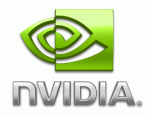 Update( 02/27/2007): I have uploaded the validation, click this link.
Update( 02/27/2007): I have uploaded the validation, click this link.When I set up my
Cedar Mill CPU, I am not expecting so much from this processor. I am thinking, 3.6GHz tops, on a stock cooler and maybe a notch of vCore for 100% stability. As you can see from that link, I hit 4GHz and I am not even spending any 'real' effort.
I was happy, 4GHz for such a cheap CPU is nice! I didn't tweak anything as far as CPU is concerned. I only played around with memory ratio, whether to set it at 1:1, or better but that's not really much of a concern. The fact that this processor booted without problem at 4GHz and completed anything and everything I throw at it, it's already quite an accomplishment.
So just for the heck of it, I decided to just push it even more. At 4.44GHz, I started some benchmarks. Prime95 is chewing along nicely, completing more than 8Hrs+ of stability. Overnight 3DMark01 is completed as well. I even tried running Aquamark03, 3DMark03, 3DMark05, 3DMark06 as well as PCMark02, PCMark04, and PCMark05.
I'll try and post up the CPU-Z validation later, I'll post some benchmark scores as well. I'll update this post later on, for now, just click on that image above to see the full image.
FanBoy out!
 Woohoo, this is done on a stock cooler with 1.4v on the CPU. It's SuperPi 1M stable and I have also done a wPrime32m run last night. I haven't done any other benching aside from that, but hey, 4.8GHz with 1.4v on 32c ambient temp? Wow! Click on the image for the validation link.
Woohoo, this is done on a stock cooler with 1.4v on the CPU. It's SuperPi 1M stable and I have also done a wPrime32m run last night. I haven't done any other benching aside from that, but hey, 4.8GHz with 1.4v on 32c ambient temp? Wow! Click on the image for the validation link.


























